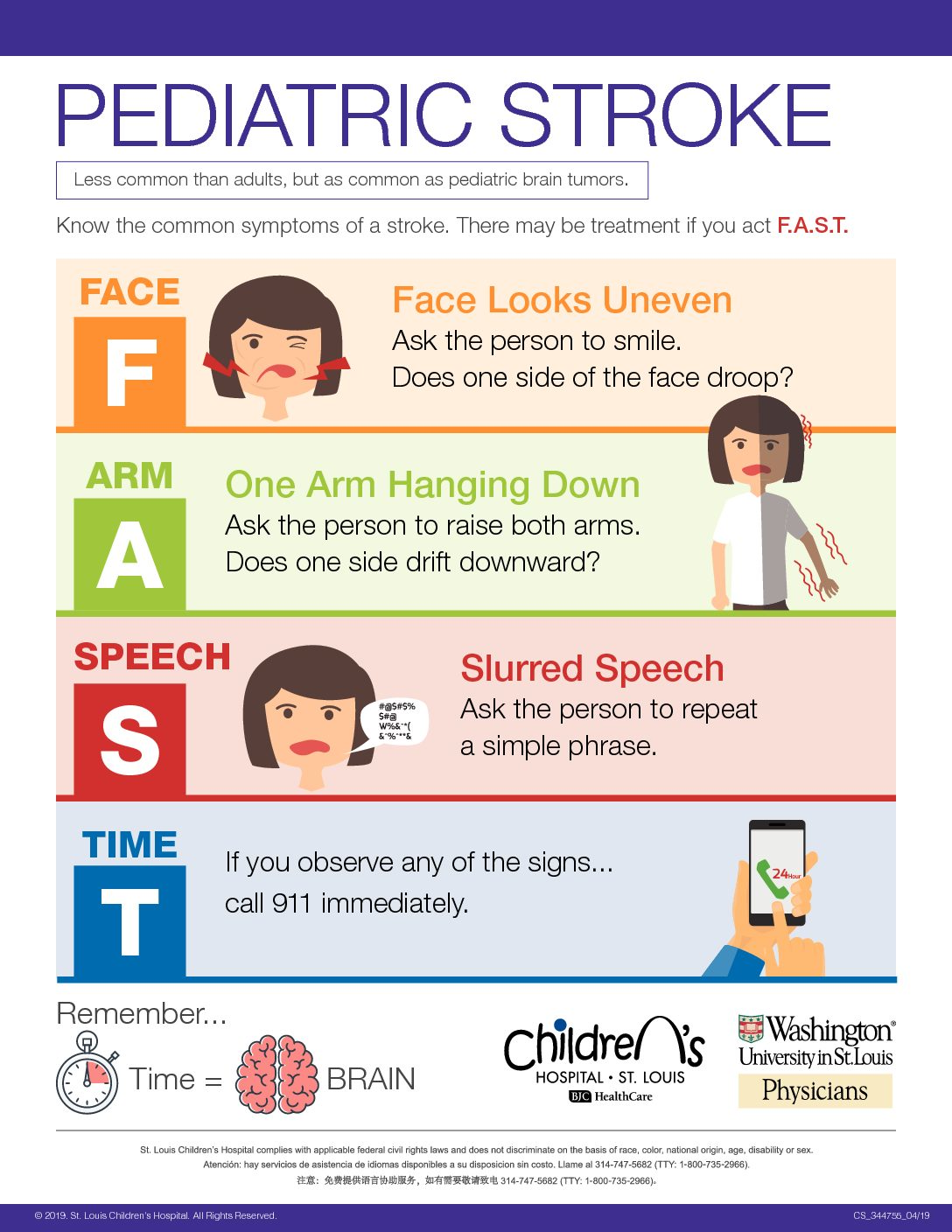
Mostly adults are well recognized to experience strokes, but even children may have it.
While they are rare, some children are more at risk than others. Around half of those who suffer a stroke will have an underlying medical condition (e.g. congenital heart disease). But the other half will have been apparently healthy beforehand. Strokes can affect many things including a child’s movement, speech, behaviour and learning. However, the good news is that in the majority of cases these effects are mild.
What is a stroke?
A stroke is a sudden disruption to the blood supply of the brain. It can affect some of the key functions that are controlled by the brain, such as movement and speech. The symptoms vary from child to child depending on the area of the brain that has been affected.
Why does this happen in childhood?
- Children with an underlying medical problem, such as a heart condition or sickle cell anemia , run a higher than usual risk of having a stroke.
- In some cases, a blood clotting problem (that can run in families) may be linked.
- One of the most common is a rare complication of chickenpox, which results in narrowing of the blood vessels in the head.
- Even untreated iron deficiency anemia in some cases can lead to a stroke.
- In around ten per cent of children who have a stroke, no cause can be identified despite extensive tests.
What are the signs and symptoms?
Signs and symptoms vary depending on the area of the brain affected.
- In general, the most common effect is weakness down one side of the body. This can be difficult to detect in a young child – it may appear that your child has problems with balance.
- A child’s face can also droop on one side.
- Speech may be affected.
- An older child may complain of a headache at the time of a stroke.
How is stroke diagnosed?
Stroke is now recognized as a medical emergency. The signs of a stroke that can be recognized by family and friends, as well as professionals, are emphasized by the catchy word ‘FAST’.
FAST stands for:
Facial weakness
Arm (and leg weakness)
Arm (and leg weakness)
Arm (and leg weakness)
Once your child has been diagnosed as having had a stroke, tests will be needed to try to establish a cause so that treatment can then be planned.
These tests may include:
- Magnetic resonance imaging (MRI) to identify the area of the brain affected.
- Blood tests to check for clotting problems or infection.
- An ‘echo’ scan to check your child’s heart
- A lumbar puncture to remove a tiny amount of cerebrospinal fluid (which surrounds the brain) to check for infection (this may be required in some cases only)
- An angiogram, which gives detailed information about the blood vessels supplying the brain. This can usually be done at the same time as the MRI.
What’s the treatment?
No two children recover in exactly the same way after a stroke. Progress will depend on the area of the brain affected, and what caused the stroke in the first place. There are a number of different treatments depending on the needs of an individual child.
- In most cases medications to thin the blood are used, like aspirin, heparin or warfarin.
- Occasionally, older children and teenagers may be candidates for clot-busting drugs very soon after the stroke. This is similar to that for adults, but can be done only during the first 4-6 hours after the stroke starting.
- For a child with underlying sickle cell anemia, regular blood transfusions are used.
- If a child has a blood vessel blockage in a large vessel, then attempts can be done to remove the blockage (usually a clot).
- Some children may develop fits (seizures) after the stroke, and in such cases an anti-epileptic medication will be given.
Rehabilitation team
All children will also need the help of a rehabilitation team including an occupational therapist, physiotherapist and/or speech and language therapist. This is the most important part of treatment.
The aim is to make a child’s daily activities easier, boost self-esteem and raise a child’s confidence. Therapy starts by assessing movement, play and independence skills, and you will be given ideas for home and school to develop your child’s skills and improve muscle tone and movement. The team may recommend and provide equipment, such as ankle or hand splints, to help your child move more easily and reduce the risk of permanent joint stiffness. The family is very important at this stage.
What’s the outlook?
Improvements in many areas may continue to be seen for several months after the initial stroke. Our research has shown that all children recover the ability to walk independently after a stroke unless they have an additional illness or, very unusually, have had strokes on both sides of the body. Recovery in the affected arm, and in particular the hand, is usually the most significant movement problem. If their dominant hand is affected, some children adapt by using their other side for more tasks.
Speech and language problems improve most rapidly over the first year. The good news is that most children understand and speak normally after a stroke. Both language (if affected) and learning need to be formally assessed; Sometimes a child’s behaviour can be affected. This depends partly on the area of the brain affected but problems can include difficulties with attention and concentration. Your child will be monitored carefully in the months following the stroke and should make a good overall recovery in time.
Medications may need to be continued for longer time and regular follow up with the pediatric neurologist is important.

